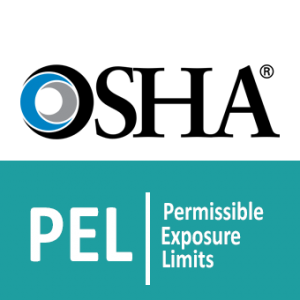Permissible Exposure Limits – Are You Protecting Your Employees?
The Occupational Safety and Health Administration (OSHA) has long published the legal permissible exposure limits or PELs for chemicals. PEL is the maximum amount of a chemical to which an employee may be exposed.

Some PELs are given as a TWA or time weighted average…typically averaged for an 8-hour day. Other PELs are given as STEL or short term exposure levels…typically 15 minutes. Still other PELs might be given as PELc, which are ceiling limits…never to be exceeded.
Some states have authority to enforce stricter safety regulations within their borders, and have established PELs for certain chemicals that are different than federal levels. As such, depending upon where your employees are located, you may have different PELs to adhere to. As reflected in the table below, Washington and California are two states with more restrictive PELs for many chemicals than the federal level.
| Chemical | WA PEL (8hr TWA) | CA PEL (8 hr TWA) | Federal PEL (8 hr TWA) |
| Acetone | 750 ppm | 500 ppm | 1000 ppm |
| Aniline | 2 ppm | 2 ppm | 5 ppm |
| Ammonia | 25 ppm | 25 ppm | 50 ppm |
| Heptane | 400 ppm | 400 ppm | 500 ppm |
| n-Hexane | 50 ppm | 50 ppm | 500 ppm |
| Octane | 300 ppm | 300 ppm | 500 ppm |
It is important to note that many manufacturers only place the Federal OSHA PEL on the Safety Data Sheet (SDS) for their chemicals, so you can’t rely on the SDS to give you the PEL that might apply in your state. A good rule of thumb is that when you have different exposure limits to follow, adhere to the more restrictive PEL and always check with the state in which you have employees to ensure you are adhering to the required PELs.
For any questions or assistance with these regulations please feel free to contact your INGENIUM representative.